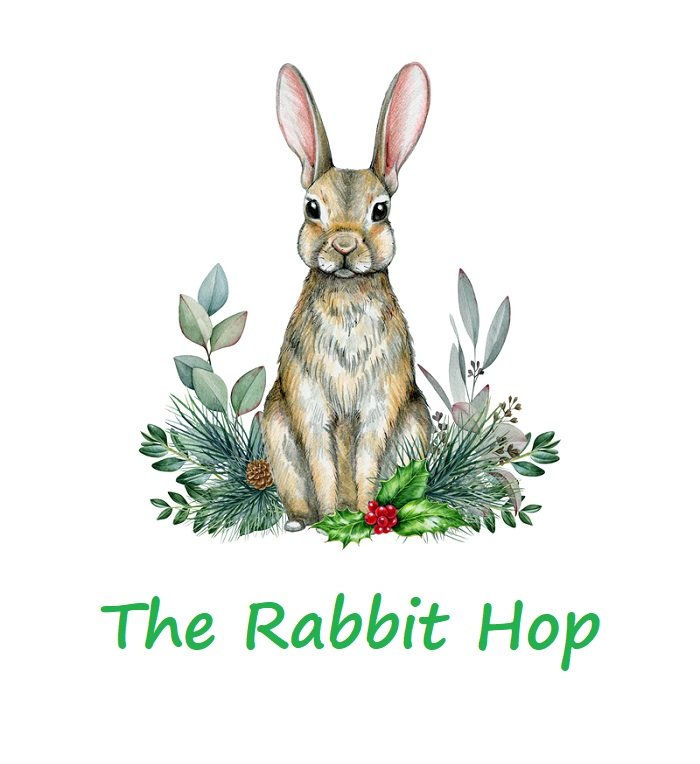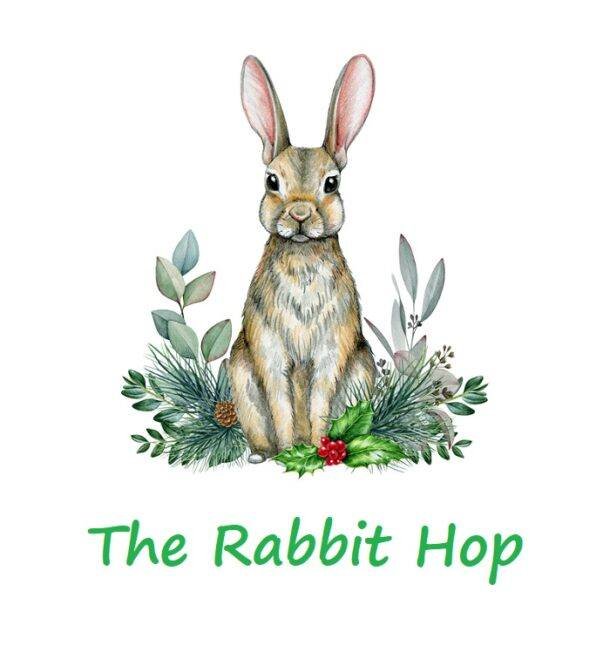Mini lop rabbits are among the most popular breeds because of their charm and docility. You can also typically see them on rabbit shows. Although Mini lops require low maintenance, they still need the proper care. If you want to keep a Mini lop rabbit, reading this article first can help!
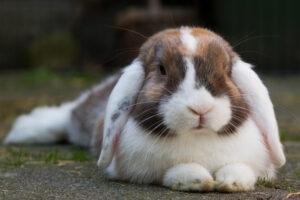
Mini Lop rabbit
Facts about Mini Lop Rabbits
| Body Size | Medium |
| Body Weight | 3 to 6.5 pounds |
| Body Shape | Compact |
| Life Span | 7 to 14 years |
| Colors | Broken, agouti, pointed white, self, shaded, wide band, ticked |
| Rarity | Common |
| Similar Breeds | American Chinchilla rabbit, German lop |
| Best Suited for | Families with kids, couples, and singles |
| Origin | Germany |
Background and History
The Mini lop rabbits we know today originated in Germany. It was after Bob Herschbach found them at the German National Rabbit Show in 1972. It was known as Klein Widder or “little hanging ear.” This breed was the offspring of the German Big Lop and Small Chinchilla. The original breed of Mini lops had agouti and white colors.
After bringing the breed to the United States in 1972, Herschbach improved the Mini lop. He did this by breeding an agouti loop pair and a white female lop. The first set of offspring had solid colors, while the second set had broken colors. Because of the new color variations, the qualities of the Mini lops became a high standard.
In 1974, Herschbach introduced the breed during the ARBA convention in Ventura, California. However, ARBA didn’t recognize the new rabbit breed since it needed to be more compact. Instead of quitting, Herschbach asked for the assistance of other breeders.
Through Herb Dyke, the Mini lop obtained a new sponsorship in 1977. With the collaboration of Dyke and Herschbach, they established a club for the Mini lops in 1978. More than 500 members supported this breed. In 1980, ARBA recognized the Mini lop during the National Rabbit Convention. As of today, it is one of the most popular rabbit breeds.
Features of Mini Lop Rabbits
Body Size
Regarding their appearance, the Mini lop rabbits resemble Holland lop rabbits. However, Mini lops are three times bigger than this breed. At birth, a Mini lop weighs about 1.5 ounces. The junior bucks and does can grow at least six pounds. These adorable bunnies stop growing after nine months. They can weigh up to 6.5 pounds and stand about one foot tall.
Although a Mini lop is smaller than many other rabbit breeds, its compact body is muscular and robust. It is why some breeders called it the Arnold Schwarzenegger of the rabbit world! The average life span of this breed is 7 to 14 years. However, it can live longer through proper care.
Coat
Mini lops’ rollback furs are medium in length, so they are easy to groom. They are also very soft to the touch. A Mini lop’s fur must be glossy and lustrous to qualify for rabbit shows. This breed’s coat is available in a wide variety of colors. They are divided into seven groups. These are the broken, agouti, pointed white, self, shaded, wide band, and ticked patterns. Below is a table for your reference:
| Categories | Colors |
| Broken | Broken, tri-colored |
| Agouti | Chestnut agouti, lynx, opal, chinchilla (chocolate, black, lilac, blue, smoked pearl, sable) |
| Pointed white | Pointed white (chocolate, black, blue, lilac) |
| Self | Black, chocolate, white, blue |
| Shaded | Smoked pearl, frosted pearl, seal, sable, sable point |
| Ticked | Steel, silver, silver fox |
| Wide band | Orange, cream, fawn, red |
Temperament and Behavior
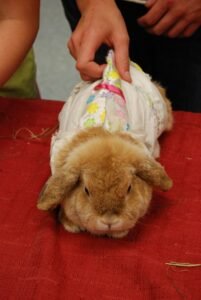
Even though Mini lops look grumpy, they are cheerful and easygoing pets. Because of their temperament, they quickly get along with kids and other rabbits. They are social bunnies and need at least two or more companions. If you are only planning to get one, give it enough time and attention.
These adorable creatures are also intelligent. Since this is the case, they need a lot of mental stimulation. You have to place different toys in their cage to keep them busy. Because they are smart, you can teach them new tricks using a clicker. They can also respond through verbal commands and recognize their names.
Like any other household pet, Mini lops also want to be part of your family. You can include them in family activities like watching television and playing games. Despite their sociability, Mini lops also want a little privacy. If they prefer to stay in their cage than spend time with you, give them the space they need.
Grooming Mini Lop Rabbits
Grooming Mini lops regularly is vital to keep them healthy and happy. One of the basics you should never miss is brushing their fur. Although their coat is not as long as the other rabbit breeds, you must maintain them at least once a week. Since they have smooth fur, using a soft brush works for them. When a Mini lop is molting, you need to brush its coat more often to prevent the rabbit from ingesting the fur.
As a warning, never give a bath to your bunny since it may cause severe stress or shock. In washing the dirt on your bunny’s feet or bottom, apply a small amount of shampoo, then rinse the area gently. You can use a blow dryer to dry the rabbit’s body but at a very low temperature.
To ensure your rabbit’s health, you must also check if there is overgrowth on its teeth. You also give it something to chew, like twigs and wooden toys for trimming its teeth. In case of malocclusion, you need to cut its teeth using guillotine-type scissors. If you are unsure what to do, bring your bunny to a vet, and he will do the trimming.
Lastly, you must also perform nail trimming to a Mini lop at least once a month. Many breeders find it challenging, especially if their bunnies have dark nails. You only have to trim the white portions to prevent injuring your rabbit. Using a pet nail clipper will also make it easier for you to perform the work.
Proper Diet
Like other rabbit breeds, Mini lop must consume hay with the same weight as its body every day. You can also give leafy greens and nuggets but only in moderate amounts. Fruits must only be given occasionally since too much sweetness is not good for bunnies. If introducing new food to your rabbit’s diet, do it slowly. Give a small portion of the food and check if the bunny’s stool becomes loose. If yes, stop feeding the food to your rabbit.
Some herbs you can feed safely to a Mini lop are coriander, parsley, spinach, and dill. Don’t give too much broccoli, cabbage, and Brussell sprouts since they may cause gases if fed too much. Also, feed carrots in moderation since they are high in sugar. Never let your bunny eat garden plants as much as possible since they can be deadly and toxic.
Habitat
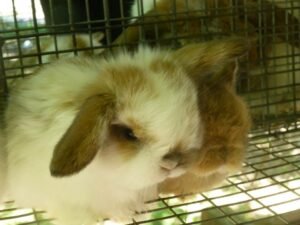
Despite Mini lop’s size, it requires ample space like other rabbits. As a rule of thumb, the hutch must be four times larger than the rabbit’s body size. The ideal cage for a Mini lop is at least 12 feet. If you have pair, then you need a bigger space. In terms of vertical space, it must be tall enough that the bunny’s head cannot touch the ceiling when standing.
If you plan to put the hutch outside your house, ensure it is above the ground. You can also provide a ramp for the bunny where it can stretch its body. However, ensure there are no harmful substances the rabbit may eat. Also, the bunny must be safe from predators.
For the bedding, you can use hay or a soft cloth. You must change the bedding at least once a week and perform a spot cleaning daily. If you want ample space for your pet, you can buy or provide a multiple stories cage.
Health Issues of Mini Lop Rabbits
Gastrointestinal stasis (GI Stasis)
One of the diseases that a Mini lop may experience is gastrointestinal stasis (GI stasis). It is a common health problem most rabbit breeds face because of their sensitive guts. The digestion slows down or stops when the bacteria in a rabbit’s guts become out of balance. Some causes of GI stasis are insufficient fiber intake, a high starch diet, or lack of exercise. Other factors include stress caused by the death of a partner or a sudden change in environment.
Here are some of the symptoms of GI stasis that you may notice:
- Appetite loss
- Bloated stomach
- Pass little or no stool
- Lethargy
- Hunched posture
You must go to the vet immediately if you observe these symptoms. There are different ways to treat Gi stasis. The vet may give motility drugs to improve the movement of the food in the intestine. Performing fluid therapy to rehydrate your pet is also an option. He may also give antibiotics, pain relievers, and anti-inflammatory medications.
Snuffles
The most common respiratory disease in rabbits is snuffles. This condition is usually caused by bacteria called pasteurellosis. It results in swelling tear ducts, eye infections, abscesses, and head tilt. If ignored, it can cause death to the rabbit. Below are some more of the symptoms that snuffle causes:
- Difficulty breathing
- Wheezing
- Lethargic
- Sneezing/Nose discharge
- Appetite
- Sudden death
Once your rabbit has difficulty breathing, you must call the vet immediately. To help with its breathing, it may be given antibiotics or anti-inflammatories. A fluid drip may also be administered to help them breathe easier. For milder symptoms, the vet may advise homecare for your rabbit. Give the prescribed medications and monitor your pet’s diet.
Frequently Asked Questions
How much does a Mini lop cost?
The average cost of a Mini lop is about $30 to $100. But if you are looking for a Mini lop that will qualify for a rabbit show, you may have to prepare about $500. The cost of the rabbit depends on different factors, such as its quality, color, and rarity.
Are Mini lops good pets for kids?
With their positive behavior, Mini lops are one of the best companions for kids. They are also sociable, so they can quickly get along with children. However, you must be careful in letting pushy kids handle them since they may hurt these rabbits. When this happens, the rabbits may become fearful.
Can Mini lops leap over the fences?
A Mini lop can leap over a four-foot fence. However, younger Mini lops can jump higher. Before you leave your rabbit in your garden, make sure you have a very high fence so it won’t escape. If your wall is not that tall, you may need to keep an eye on it while roaming around the garden.
Is A Mini Lop Rabbit Your Next Pet?
Mini lop rabbits are adorable creatures suited for kids and adults. They have cheerful and friendly personalities that most rabbit owners love. But like any other rabbit breed, Mini lops also need attention from their owners. They require a proper diet, regular grooming, and special attention to grow healthy.
Read More
